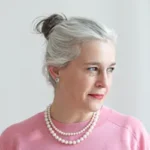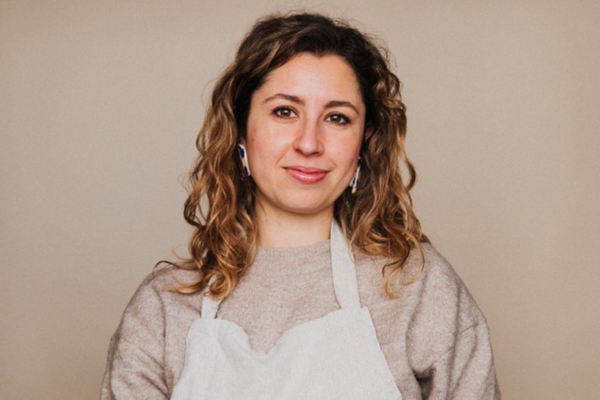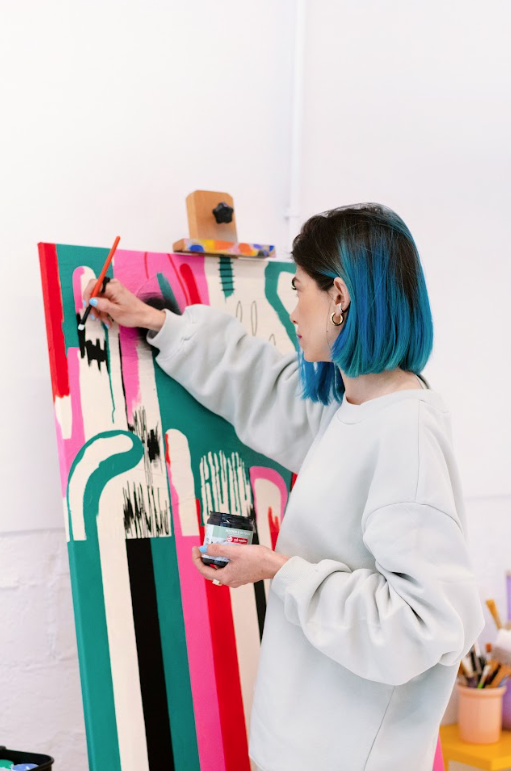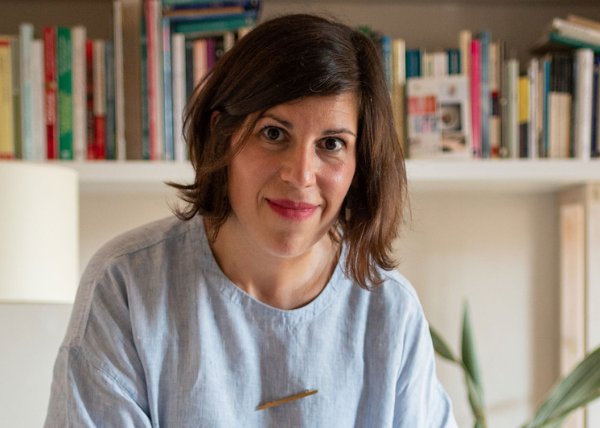Núria Moliner, architecture as a third skin
We talked to her about architecture and housing, the main stage of our lives and our third skin.

Núria Moliner is an architect, communicator, musician and environmentalist. If any of these subjects are of interest to you, you will have seen her in the documentary series "Animals arquitectes" (Animals architects) in 3Cat, in the programme "Humanscale TVE or in her numerous collaborations in festivals, congresses or the press. Or maybe you have had her as a professor of Theory of Architecture at the ETSAB (UPC), or you have enjoyed some of her concerts with her band. Intana or with Delafé y las Flores Azules. Non-stop.
[Q] In a recent interview you said that "If we know architecture better, we will make better decisions. Especially when it comes to renting or buying a house".
[R] It's a pity that architecture, design and interior design are not talked about more in schools. It is a huge lack and a huge mistake because architecture, as the scenography of our lives, defines us as a society and culture, influencing our daily decisions.
If we know nothing about architecture, how can we assess whether a house suits our needs? How can we know if the lighting in a house is optimal? Do we know the materials it is made of? If we understand architecture as part of our culture, we will have more tools to make better decisions when it comes to finding the house of our dreams.
"Architecture is the scenography of our lives, it defines us as a society and a culture, greatly influencing our daily decisions".

What is important to you in a house?
I have moved many times and it has been a learning experience to learn what I need and what I don't need. Above all, I like the flat to have a lot of natural light; for years I lived in a dark flat because I cared more about the location than what the flat looked like inside... I also lived in a very noisy flat and now, of course, I also value silence a lot.

As far as textures and materials are concerned, I have been changing. I still really like the traditional architecture of Barcelona, with its hydraulic floors, its high ceilings with wooden beams... and I think that this must be preserved so that the flats retain their identity. That is why I am a great advocate of refurbishment rather than new construction, because new construction in general is very standardised, very globalised and does not reflect the identity of where it is located. If we are losing heritage identity along the way, we are losing culture.
I particularly like old flats that have been tastefully renovated, maintaining their original elements without renouncing the materials of the time or the architectural language of the present. Above all, I like places with a lot of personality. I try to live in flats with their own identity, special and unique spaces that challenge me. and not in standard flats that have been made according to strict criteria of economic profitability, with mediocre finishes and synthetic materials for the same model of family or lifestyle, whatever that is today.
Is rehabilitation the present and the future of architecture?
Absolutely, and especially in dense and consolidated areas such as European cities. In Europe there is a very old building stock and that is why refurbishment is a necessity because it is more sustainable than building from scratch, and even more so if it is done in an energy-conscious way.
"Rehabilitation is the present and the future of architecture, especially in dense and consolidated fabrics such as European cities".
Rehabilitation is also an opportunity not only as a transition to a greener environment but also as a way to reconnect with the identity, culture and heritage of the place. In addition, there is now a lot of European funding available to meet the 2030-2050 targets, which is expected to occupy a third of architects!
In 2021 you gave a lecture on the housing of the future, what is your desideratum about it?
The house of the future I believe should be self-sufficient rather than sustainable (a word that is already devoid of its true meaning), and be a mechanism integrated into the ecosystem of which it is a part. I imagine a house that recovers vernacular architecture, that understands the place and the climate where it is located and that is built with local materials but at the same time incorporates the technological advances of the present to make it even more self-sufficient. I believe that this is the housing issue of the future and that it is especially important in cities.
I believe that the city should become more of a jungle, even though we inevitably associate the city with concrete. I was part of the advisory board of the Barcelona City Council in the project of the superilla in c/ Consejo de Ciento which was won by Cierto Estudio [access to the Cierto Estudio interview we did at Monapart in 2020]. It is very significant that a team of six millennial women architects won an anonymous international competition for thinking about what the city should look like in the 21st century.
"I think the city should become more of a jungle, even though we inevitably associate the city with concrete".
The motto of the project was precisely "walking from the centre", a declaration of intent that puts the neighbours in the place where the cars are now. Creating pleasant and healthy spaces that go beyond mere places of transit to go from one place to another, or to consume or produce, but spaces to be, to read, to play, to socialise... The idea in the end is a public space that resembles a domestic space.

Is your home a reflection of who you are?
My house is a true portrait of who I am. I always put notes of very bright colours, like when I dress. In the end, clothing is also a home, it is the second skin that surrounds us and that we inhabit and that interconnects us with our environment.
"Clothes are the second skin we inhabit. Housing is the third.
I don't collect anything but I do like to keep objects from my travels, souvenirs... and I display them in small altars at home.
And when I move I always take my plants with me... My house is a bit of a jungle.
Do you believe in domesticity extended to the neighbourhood, the street, the squares...?
For 8 years I lived in the neighbourhood of Gracia [see our article about the flat search in GraciaI've been involved in the associative fabric, in the neighbourhood organisation that decorates the streets for the famous neighbourhood festivals... that is to say, I do not conceive of housing without its inseparable link to the community and the immediate environment. I like to know my neighbours and greet them by name, know the local shops well, etc. I grew up in Badalona, a city where the centre is like a small village and that has logically influenced me. Being able to live on this village scale in the big city is ideal.
How do you see Barcelona?
There are times when I am quite pessimistic because I suffer from climate anxiety and I see that many decisions are taken that are not consistent with environmental conservation. But I also welcome the initiatives that I know about through my work that are moving towards a more conscious urbanism.
We are making a lot of progress but these changes generate scepticism or opposition at the outset. People complain that in the city it is becoming more and more difficult to go by car.... but it has been proven that every extra second that a red light lasts is a % of people opting for another type of mobility that is more sustainable and healthier. Why do people in Copenhagen cycle so much? Is it because they are more environmentally friendly than anyone else? Is it because they are healthier? No. It's because the cycle route from point A to B is by far the fastest of all, and that's not by chance, it's because city planners have decided to do it that way. It is important that this awareness takes hold and that we all adapt until we reach the ideal of the 15-minute city (all services within a 15-minute walk) and the 45-minute territory (train journeys).
Where was your vocation for architecture born? Any first memories?
When I was a child I liked archaeology, but then I became more interested in the architecture of the present than in that of the past. Moreover, I always liked artistic and creative disciplines as much as technical ones, so I looked for a discipline that balanced the two cerebral hemispheres: the technical and rational side with the more passionate and artistic side. For me this is where the beauty of architecture lies.
One of my earliest memories is the first day I picked up a pencil, my family says I went crazy. And there's a photo!

Which architects are your references?
Peter Zumthor and his humble architecture, which draws maximum beauty from materiality and spaces. Also Eileen Gray, a pioneering woman with an incredible history who materialised the concepts of the modern movement in the domestic space, something that no one else had managed to do.
I also admire the architects from here who have a very radical stance, such as the Lacol Architects' Cooperativewhich has built the first cooperative housing building with transfer of use in Barcelona, and it is also built in wood.

What do you like most about your work, and what is something you are particularly proud of?
I am very satisfied to be constantly learning, to meet first-hand people I admire, to be able to access and visit interesting places and learn about the best architecture that is being done in our country... In this sense I feel very fortunate and grateful.
What I am most proud of is having contributed with the team to create and disseminate architectural television content designed for a diverse and wide audience that enjoys and learns from this discipline. In the past, most of the time architecture was only talked about for architects. Fortunately, there are more and more people and projects that spread architectural culture in a more accessible way. And it makes me very happy to dedicate myself to it.
Colour, book, disc...
Yellow | Walden by H. D. Thoreau Ok Computer by Radiohead

Anything you want to tell us that we haven't asked you, speak now or forever hold your peace!
Sometimes beauty seems optional, an extra, a luxury, something expensive, snobbish or asking for too much. And the vindication of beauty seems trivial, frivolous. But the opposite is true. If we are in a beautiful space it gives us mental wellbeing, health... I think it is an ideal to which we should aspire. Access to a decent, functional and beautiful home should not be a luxury that only a few can afford, but a right. The fact that someone has thought about the details of a cup, a table, a space... changes our sensations, our actions and even our conversations.





